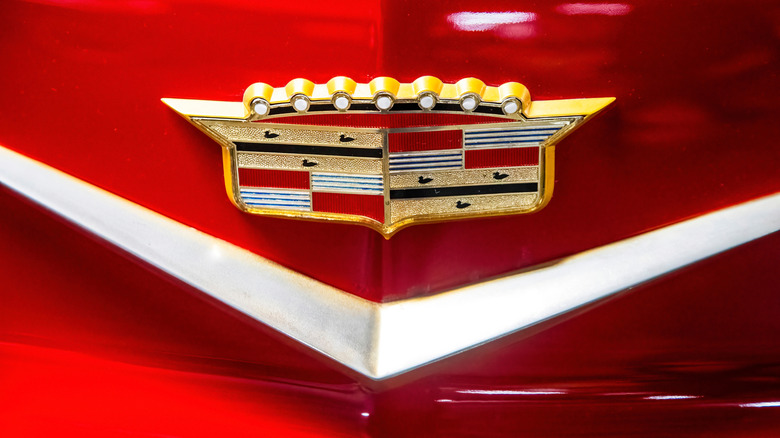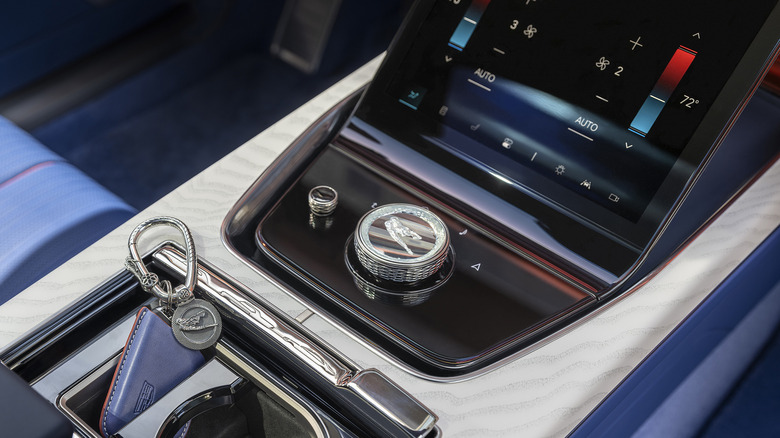
Some of the coolest badges and logos in the auto world have something in common — they're based on someone's coat of arms. Which makes sense since those displays were originally created to help soldiers tell who was who during battles. Meanwhile, automakers like Alfa Romeo, Porsche, Saab, Ferrari, and even Cadillac have shown off various coats of arms as they battle for sales.
GM's luxury division used the coat of arms of one Antoine de la Mothe Cadillac, who is credited with founding Detroit on July 24, 1701. That's the date Cadillac and his French expedition established Fort Pontchartrain on the same site that would grow into the Motor City. Detroit natives also know Cadillac for his tussle with a mysterious red creature — the Nain Rouge — that's still chased out of the city with a spring parade every year for good luck.
Now, Monsieur Cadillac wasn't really a member of the nobility, having added la Mothe Cadillac to his name on his own initiative and perhaps created the coat of arms, too, complete with merlettes. They aren't ducks but mythical birds, without feet or beaks, that never stop flying to reach their goal. When three are shown, as in the Cadillac logo, they represent the Holy Trinity as a mark of an ancestor's involvement in the Crusades. It's a lot of old baggage for a badge to be carrying around, so Cadillac updated the logo's look for more modern appeal in 2000.
 Karolis Kavolelis/Shutterstock
Karolis Kavolelis/Shutterstock
We probably don't have to explain that Henry Ford founded the Ford Motor Company, and some might know he built America's foundational airliner, but he was also involved — indirectly anyway — in the creation of Cadillac. What happened was that Henry's early go-round in the auto business wasn't working out and was about to be sold off in pieces. However, the person brought in to appraise those pieces had other ideas.
Henry Leland was already the owner of his own engineering company when he was brought in to evaluate a failing factory owned by the Henry Ford Company. However, after a fight with investors prompted Ford to leave the company altogether, Leland put his own car into production under a new name. The Cadillac Automobile Company produced its first car in October 1902 without a logo at all — it simply showed the Cadillac name in script.
The Cadillac family coat of arms made its automotive debut in 1905, and while it's gone through its share of changes over the years, a modified version is still in use on today's cars. Notable variations include logos with octagonal frames in 1925 and 1926, winged logos in the 1930s and 1940s, and the classic laurel-wreath badges from the 1980s and 1990s. The ducks? They flew off the logo in 2000 and haven't been seen since.
Beyond logos and badges for Cadillac itself, there have been some interesting brand-adjacent designs as well. For instance, consider the short-lived La Salle marque. GM introduced the name in 1927 for a slightly more affordable line of cars priced just under Cadillacs, and it not only built the cars at the Cadillac factory but also used the same naming strategy. After all, La Salle was another French Explorer and the cars' logo took elements of his coat of arms, like a greyhound and eight-pointed star.
Cadillac also has a distinctive logo for its high-performance V-Sport and V-Series cars. Here, the V honors the V-shaped hood ornaments used on post-World War II cars and is accented by the same colors used for today's Cadillac badge. The one used on internal-combustion vehicles, that is. Cadillac's EVs have adopted a monochromatic look for their badges.
Speaking of electric vehicles, the bespoke $340,000 EV known as the Cadillac Celestiq is rebooting another symbol of the brand's past. The Cadillac Goddess first appeared as a hood ornament in 1930, and she continued to grace the brand's hoods for more than 25 years. She went missing, however, after a final showing on the 1959 Cadillac Eldorado Brougham — until now.
The new Goddess can be seen as a 3D adornment milled from aluminum and set into molded glass on the Celestiq's front bumper. Inside, the highlight is a backlit, glass-encased Goddess shining on the infotainment controller.















